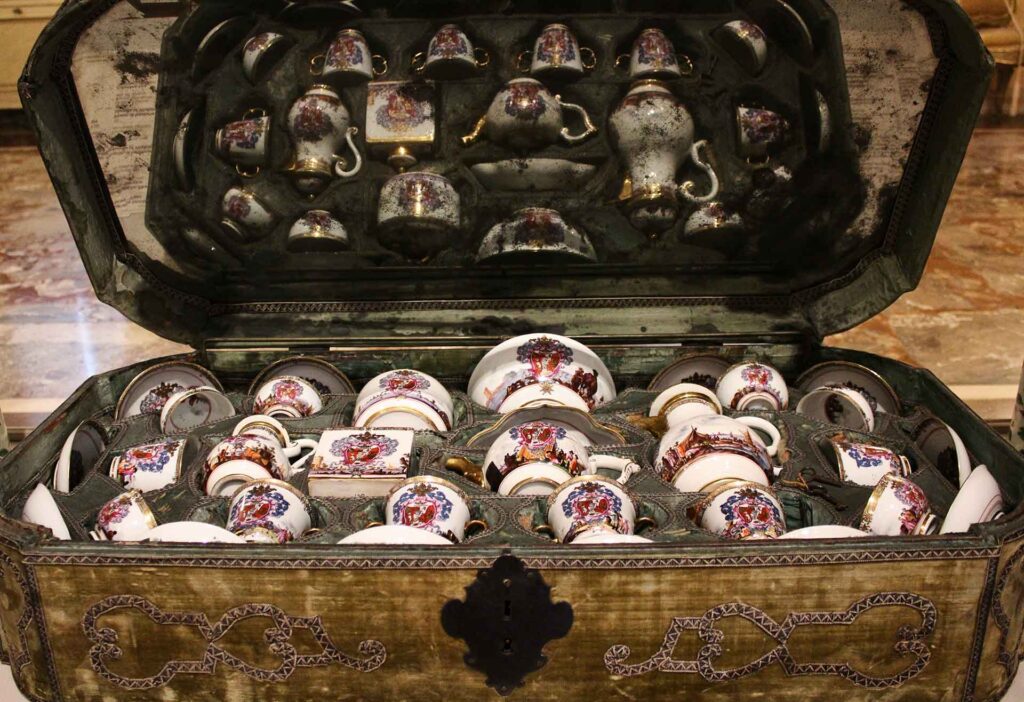“Borromeo” Tea and Coffee Set
Meissen Manufactory , 1736 - 1740
Description

Repeated on all pieces of the service are the mark with the cursive A, initials of King Augustus III of Poland (1696 -1763), and the coat of arms of the Borromeo family. The latter, inserted from time to time in the decoration, has the form of a shield, the inscription “Humilitas,” and the figures of a unicorn and a snake on the left and a dromedary on the right. From below hangs a star-shaped emblem, which has been identified with that of the Polish Order of the White Eagle. A document records that on November 19, 1736, King Augustus III of Poland signed the investiture of Frederick VI Borromeo (1703-1779) to that order. Hence the hypothesis that Frederick VI commissioned the service or received it as a gift from the king. This work is valuable not only for its fine “port scene” decoration but also for its excellent state of preservation, due also to its case: a beautiful wooden case covered with green velvet with silver ribbons, hinges and locks.
Data Sheet
Author
Meissen Manufactory
Date
1736 - 1740
Material and technique
hard-paste porcelain
Measures
Acquisition
Gian Giacomo Poldi Pezzoli bequest, 1879
Inventory number
1034
location
Stucco Room
The Stucco room is the first historical room on the piano nobile, where the Museum’s porcelain and majolica collections have always been housed. Gian Giacomo Poldi Pezzoli personally acquired almost all of the pieces on display, about six hundred and fifty, displayed in a showcase built in 1880 to divide the Stucco room from the Golden room. The section of Meissen porcelain, undoubtedly the richest and most significant, covers the manufacture’s production from the 1720s to the second half of the nineteenth century, and includes table services, statuettes, and various objects. In Gian Giacomo’s time the Hall of the Stuccoes, called the Yellow Room, had stucco decorations in the Rococo style, which were destroyed in ’43 and partially reconstructed according to the original models.
collection
Ceramics
Within the Museum’s rich collection of ceramics are works of great quality executed by leading Italian – particularly Doccia and Capodimonte – and European manufactures. Among the latter, the most significant nucleus is the 18th-century Meissen porcelain, recently augmented by a generous donation from the Zerilli-Marimò collection.
